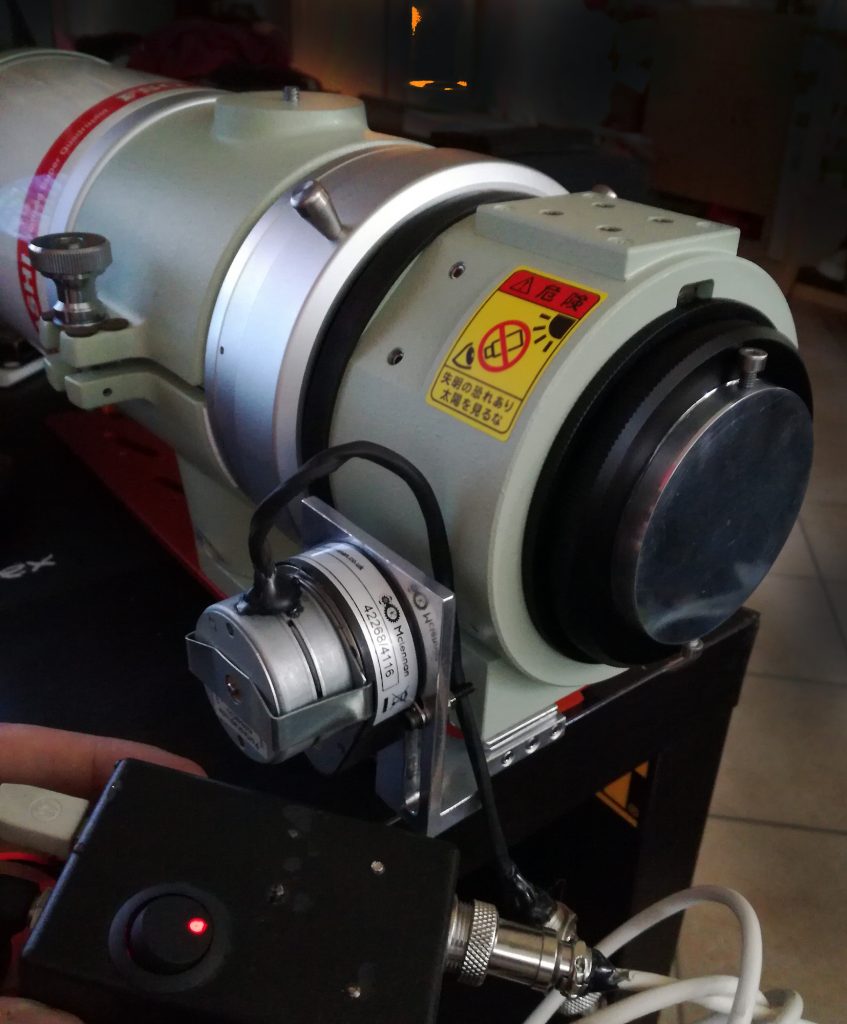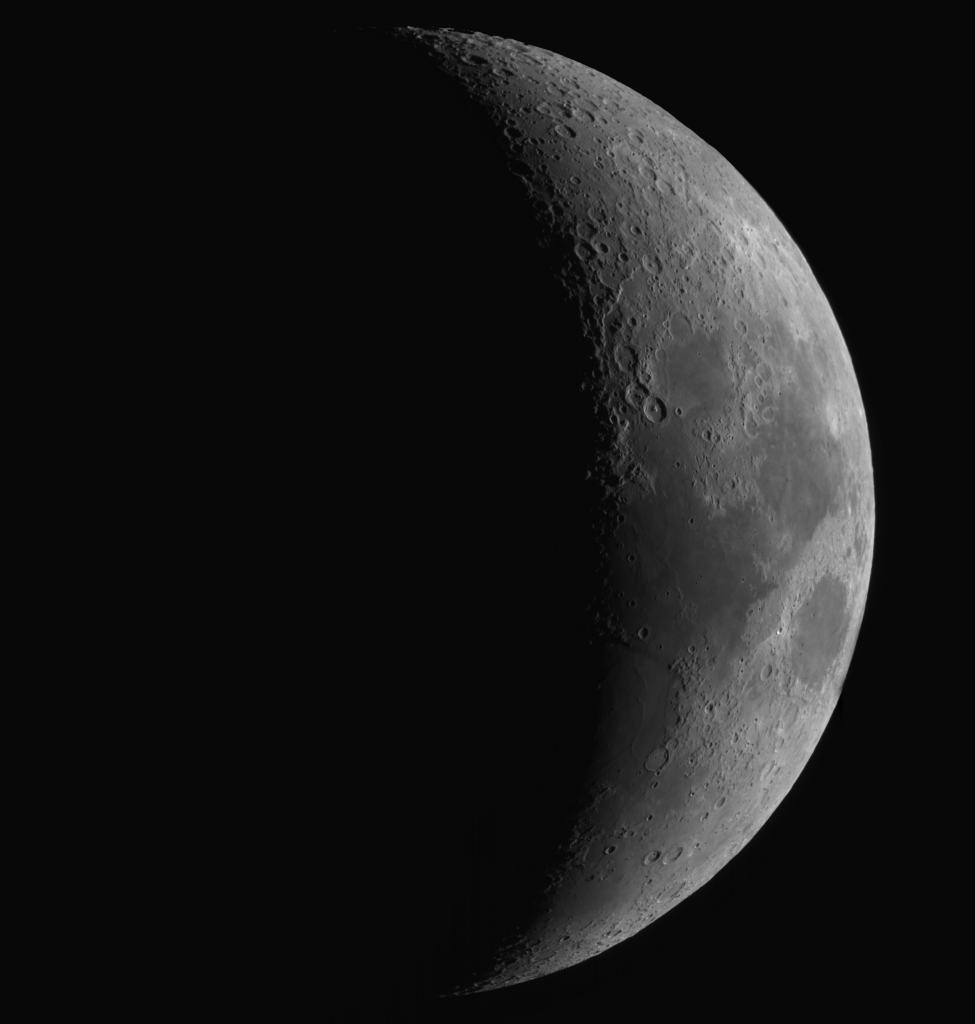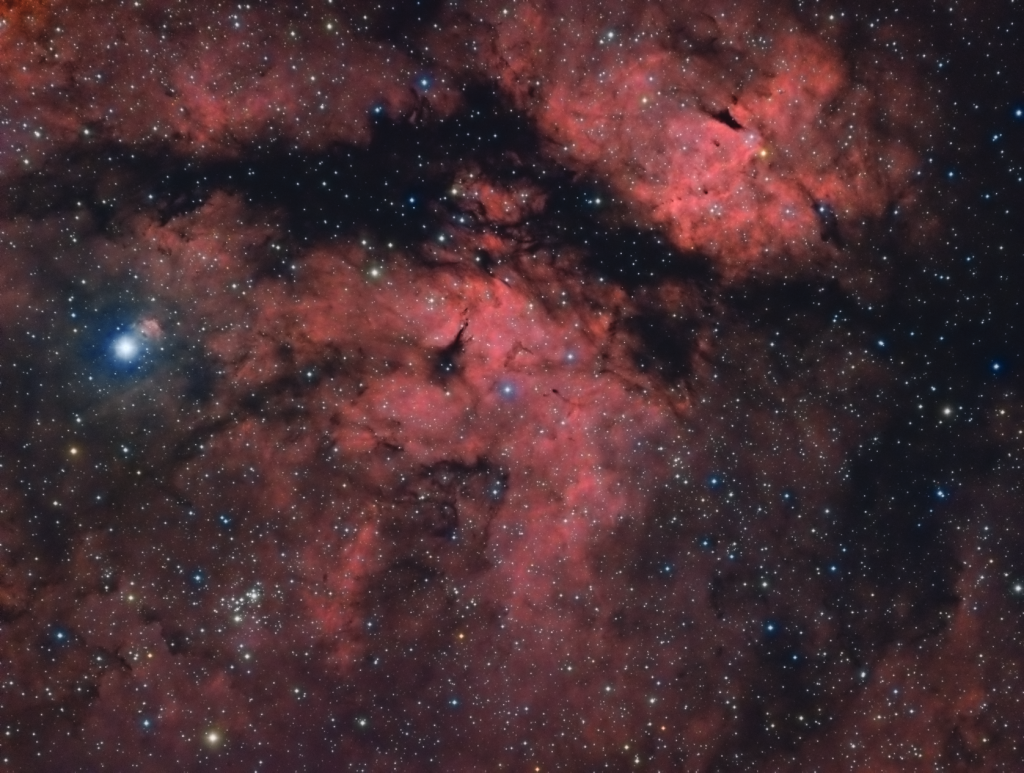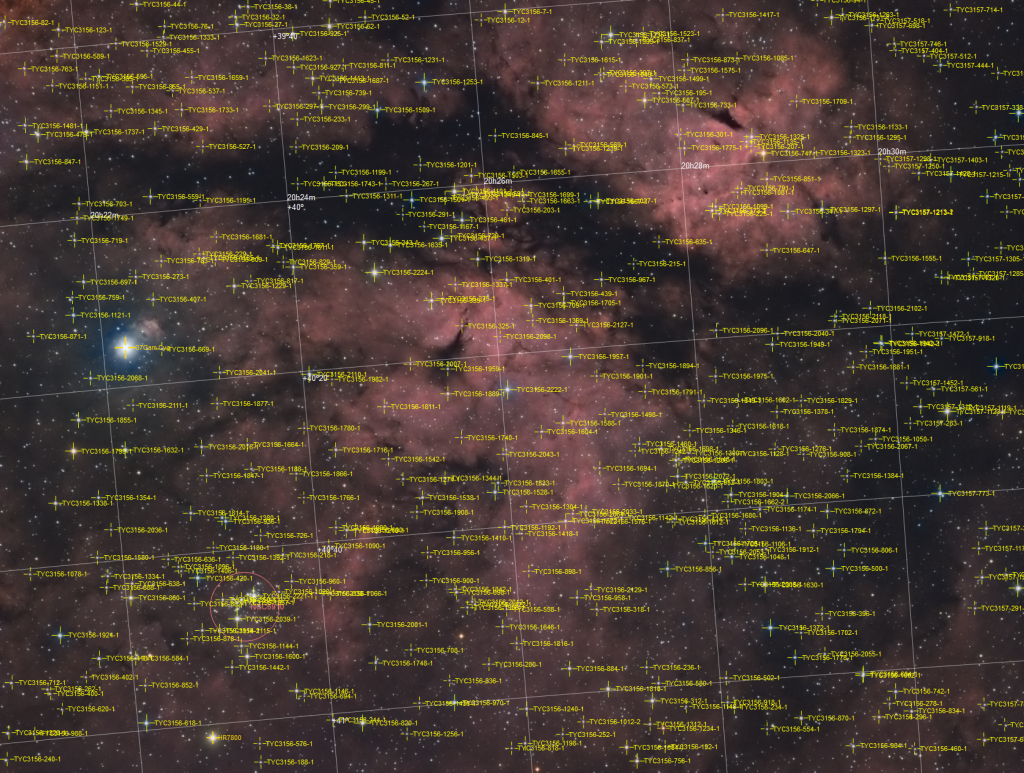The goal of this project was for the automated focusing system to have great holding torque (80Ncm) for heavy image trains (4-5kg) and very fine steps to accommodate the super tight FSQ106 critical focus zone.

The formula to calculate the critical focus zone on a telescope is :CFZ = Focal Ratio * Focal Ratio * 2.2
For the FSQ106ED we have : CFZ = 5 * 5 * 2.2 = 55microns
So to be able to have perfect focus achieved we need every step on the motor to be 55microns or less for even better resolution.
The motor used on this build is geared and has a reduction of 250:3 which gives us 4000 steps per revolution.
One full revolution on the focuser coarse knob (where we are coupling our motor) makes the focuser move 29.8mm.
Now we have all the data we can do the maths 😛(29.8mm * 1000) / 4000 = 7.45 microns per step.
The actual resolution achieved with this build is 7.45 microns per motor step!


